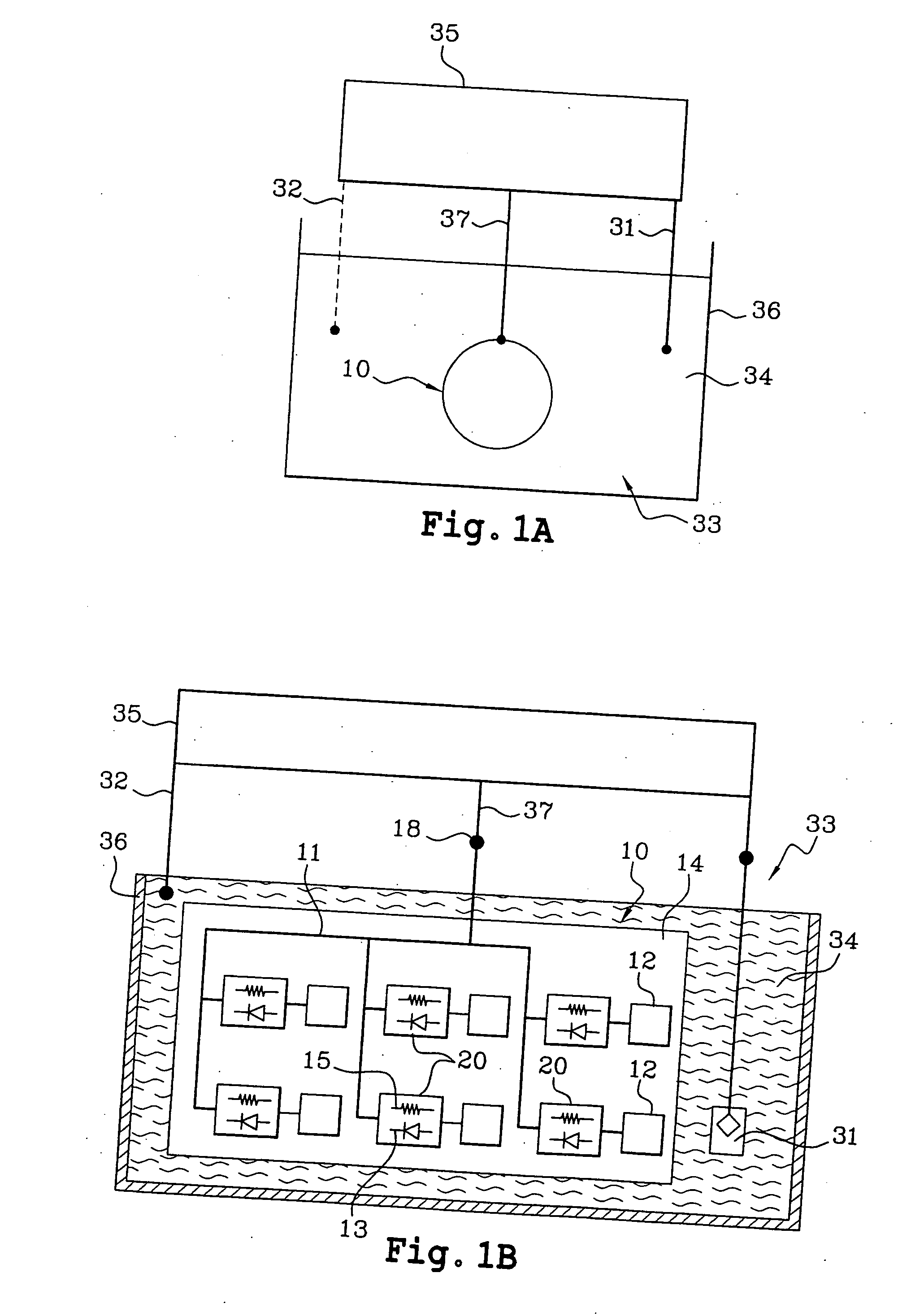Coating support and method for the selective coating of conductive tracks on one such support
a technology of conductive pads and support posts, which is applied in the direction of electronic organic material coating, printed circuit non-printed electric components association, instruments, etc., can solve the problems of long and expensive techniques, wiring difficulties, and the inability to address conductive pads
- Summary
- Abstract
- Description
- Claims
- Application Information
AI Technical Summary
Benefits of technology
Problems solved by technology
Method used
Image
Examples
first embodiment
[0077] illustrated in FIG. 1C, the pad 18 is in the form of a conductive layer 120. It makes it possible to electrically connect all of the conductive pads 12 through the intermediary of a same access resistance due to the resistivity of the substrate 14, the pads 12 all being equidistant from the conductive plane 120. The application of a voltage to the shared addressing contact 120 makes it possible to apply an identical voltage on all of the conductive pads 12, simply lower due to the ohmic drop linked to the substrate (drop that may be compensated by the source applying the voltage to the shared addressing contact). An identical lining may thus be obtained on all of the conductive pads 12.
second embodiment
[0078] illustrated in FIG. 1D, the substrate 14 is resistive and the addressing contact 18 is in the form of a conductive plot 121 in a position not equidistant from the conductive pads 12. The substrate has a resistivity of a sufficient value to prevent the lining of at least one conductive pad 12 of the support under the application at the shared addressing contact 121 of a voltage allowing the lining of at least one other pad 12 of the support 10.
[0079]FIG. 2 is a diagram, more precisely a voltammogram, indicating on the Y-axis the evolution of an electrochemical current in the circuit 33 as shown in FIGS. 1a and 1b. The current is given as a function of a potential measured between a conductive pad 12 and reference electrode 32. This potential is shown on the X axis. This diagram therefore does not take account of the existence of the selection means 20 and therefore any difference between the potential applied by the potentiostat 35 and the potential obtained on the pad 12. Th...
PUM
| Property | Measurement | Unit |
|---|---|---|
| current density | aaaaa | aaaaa |
| current | aaaaa | aaaaa |
| thickness | aaaaa | aaaaa |
Abstract
Description
Claims
Application Information
 Login to View More
Login to View More - R&D
- Intellectual Property
- Life Sciences
- Materials
- Tech Scout
- Unparalleled Data Quality
- Higher Quality Content
- 60% Fewer Hallucinations
Browse by: Latest US Patents, China's latest patents, Technical Efficacy Thesaurus, Application Domain, Technology Topic, Popular Technical Reports.
© 2025 PatSnap. All rights reserved.Legal|Privacy policy|Modern Slavery Act Transparency Statement|Sitemap|About US| Contact US: help@patsnap.com



